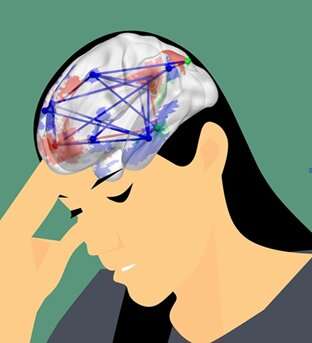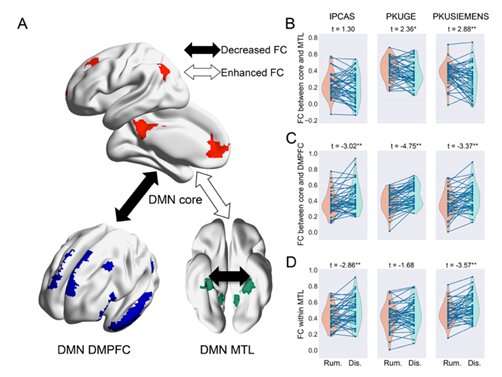
Rumination is generally defined as a recurrent and passive focus of thoughts on depressed mood itself and its possible causes and consequences. Sometimes stated as “overthinking,” rumination plays a pivotal role in the onset, maintenance and phenomenology of major depressive disorder (MDD). However, the neural mechanism behind this thinking style remains largely elusive.
Recently, a research team led by Prof. Yan Chaogan from the R-fMRI Lab at the Institute of Psychology of the Chinese Academy of Sciences have uncovered the underlying network mechanisms during active rumination.
With a modified rumination state paradigm, the researchers induced participants to engage in rumination while undergoing functional magnetic resonance imaging (fMRI) scans.
Then they computed the Pearson’s correlation during the activity among different brain regions. Results revealed that couplings between the core and the medial temporal lobe (MTL) subsystems of the default mode network (DMN) were elevated while the other couplings were decreased (Fig. 2).
This dissociation may reflect the over-restriction of self-referential and affective appraisal regions on the regions engaging in autobiographical recollection and generation of spontaneous thoughts, while other unrelated regions become uncoupled to allow for more information exchange among those involved regions.

The finding raised the possibility that a treatment targeting rumination may have better efficacy if it can reduce the over-connectivity and enhance reduced connectivity. One potential way to help individuals to disengage from rumination may be through mindfulness practice, a receptive and non-evaluative attention to the immediate experience.
Source: Read Full Article